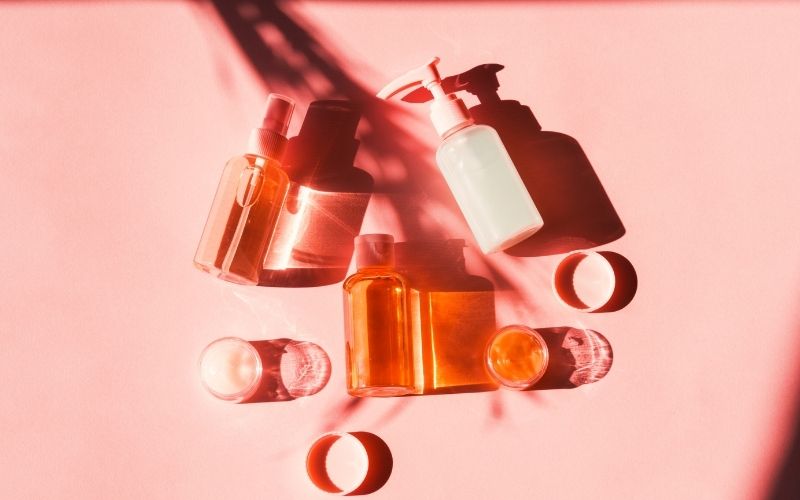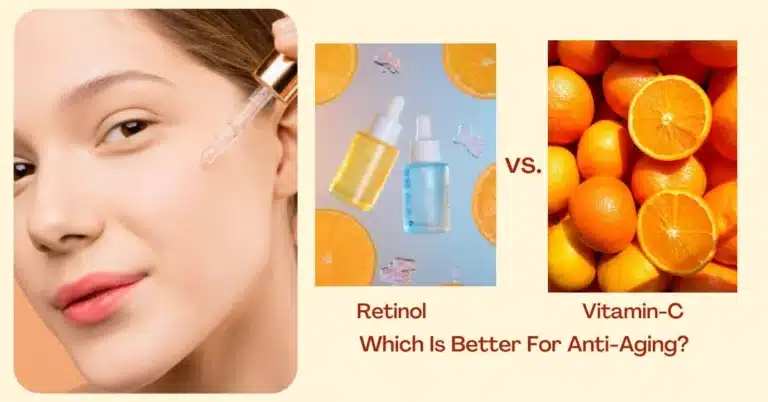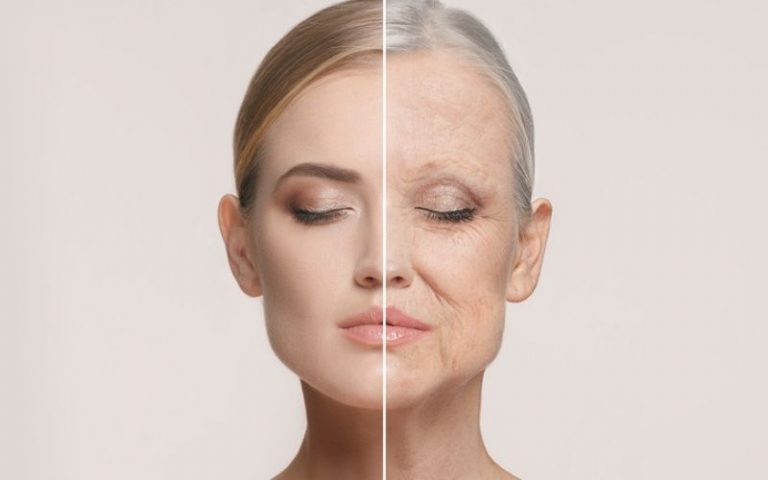11 Anti-aging Skin Ingredients You’re Not Using — But You Should Be

One of people’s most common skin care concerns is the visible signs of aging, such as the wrinkles and fine lines, sagging skin, dull and discolored skin, and bumpy rough texture of the skin.
We have come a long way in combatting the signs of aging.
With so many skin care choices on the market and so many natural ingredients and nutrients to choose from, it is hard to know which ones are the best ingredients to fight the signs of aging and which ones are appropriate for your skin type.
If you have any skin concerns or skincare questions or if it is your first time buying skin care products and are frustrated by ingredient labels, you should always ask your dermatologist for help in creating a beauty routine.
There is no magic wand to turn your mature skin into youthful skin immediately — unfortunately.
Nor is there any way to stop the normal programmed aging process.
However, there are potent ingredients which can help slow down the process, stop premature aging, and help you preserve your youthful appearance.
These skin care ingredients are a very important addition to your skincare routine for the lifetime care of your skin.
1. Retinol
Retinol found in skincare and cosmetic products is a synthetically derived form of vitamin A, which is a powerhouse anti-aging ingredient due to the antioxidant carotenoids it contains, that can to help treat the effects of sun damage (1-7).
It is the most important and best anti-aging product in your skin care routine. Extensive clinical research has been conducted on retinol.
It was first discovered by a dermatologist, Dr. Kligman, decades ago and fast became know as the “wrinkle cream”.
This “wrinkle cream” is always a derm’s top pick for anti-aging. It is part of the family of ingredients called retinoids.
Retinoids include over the counter retinol, and prescription retinoic acid (tretinoin or Retin A), tazarotene (Tazorac), and adapalene (Differin gel). Prescription topical retinoids, like Retin A and Differin, are FDA approved to treat acne, while Tazorac treats acne and psoriasis.
These derivative forms of vitamin A are some of the most important ingredients in skin care products.
What do retinoids do?
Retinoids increase cell turnover time so that your skin can exfoliate dead skin cells quicker, which also helps get rid of comedones (blackheads and whiteheads).
Retinol helps stimulate collagen production to help minimize the appearance of fine lines and wrinkles, even out skin tone and skin texture, get rid of age spots and dark circles under the eyes, and improve the appearance of scars.
Also, it helps decrease excess oil or sebum production and decrease inflammation that results from the acne causing bacteria P. acnes. This makes it a valuable ingredient in treating acne-prone skin.
However, sometimes it can cause dry skin. The use of a moisturizer after application is a must for some in order to combat the dryness induced by retinoids.
Also remember, you do not need a lot of retinol to get the good effects. All you need is a small amount in a thin layer, which will go a long way.
They are best applied to clean skin at the end of the day or bedtime since sunlight may inactivate some of them.
2. Vitamin C
Vitamin C or ascorbic acid (l-ascorbic acid) is an important and well studied ingredient that has been clinical proven to slow down the aging of the skin and maintain healthy skin (1-3, 8, 9).
It is best known as an essential nutrient to help boost the function of the immune system.
It is the active ingredient in many natural skin care products and should be part of everyone’s skin care routine. Through extensive clinical research, it was discovered that it helps stimulate the production of collagen, which diminishes the appearance of fine lines and wrinkles.
It also inhibits melanin production, which is responsible for discoloration and dark spots, also known as age spots.
Therefore, it helps improve uneven skin tone, lighten the skin, brighten your complexion and help your skin glow.
How exactly vitamin C works
Vitamin C is a powerful antioxidant which helps scavenge free radicals.
These free radicals, which are produced by uv light from the sun and pollution, cause oxidative stress that ultimately leads to the destruction of collagen and elastin in the skin.
Antioxidants help fight wrinkles by scavenging these free radicals and getting rid of them before they can damage our skin.
Collagen is a structural protein which keeps your skin firm and wrinkle free.
Elastin give your skin elasticity which prevents sagging skin.
This destruction of collagen and elastin by the free radicals subsequently leads to loss of firmness, wrinkles and sagging skin. When vitamin C(l-ascorbic acid) is combined with vitamin E (another antioxidant), vitamin C stabilizes vitamin E and regenerates it (1).
When both of these powerful ingredients are combined with ferulic acid, the ferulic acid stabilizes both of them and increases their protective abilities against the harmful rays of the sun which damage our skin.
This combination formula makes a powerhouse anti-aging serum that should be applied every morning, after you cleanse your skin, but before you apply your face cream, so it can penetrate into your epidermis and dermis.
Some vitamin C forms, like ascorbic acid, that are found in anti-aging serums are unstable molecules (1).
These unstable molecules become inactive when exposed to light, so it is important to store these vitamin C serums in air tight, dark glass bottles to maintain their stability and efficacy.
Tetrahexyldecyl ascorbate is the most stable form of vitamin C.
3. Niacinamide
Niacinamide, or nicatinomide, is the biologically active form of vitamin B3 (1, 2, 10).
It is a key ingredient in anti-aging creams because it helps a multitude of skin problems.
It helps reduce fine lines and wrinkles, lighten discoloration and brown spots caused by the sun, treats acne-prone skin because of its anti-inflammatory properties which calms irritated skin, and helps hydrate the skin.
It boosts the skin’s natural barrier function to prevent damage from the sun and toxins.
It is a potent antioxidant, which may help prevent skin cancer formation.
Finally, it improves the efficacy of other antioxidants, like vitamin A and C.
4. Hyaluronic Acid
Hyaluronic acid is an amazing humectant that can bind 1,000 times its weight in water and is helpful in improving skin hydration (1, 2).
Hyaluronic acid treats dry skin by binding the water molecules inside your skin to keep it looking plump, volumized and hydrated. Because of its ability to retain water, it reduces the appearance of wrinkles, giving you smoother skin.
It is a common ingredient in day and night creams, as well as masks and eye area creams.
Many injectable fillers are made of hyaluronic acid.
It also possesses anti-inflammatory properties making it helpful in the treatment of dermatitis.
5. Glycolic Acid
Hydroxy acids are a family of acids that include alpha-hydroxy acids, AHA (glycolic acid, lactic acid), beta hydroxy acids, BHA (salicylic acid) and polyhydroxy acids, PHA (1, 2).
Glycolic acid (GA) is an important anti-aging ingredients that has shown efficacy in numerous clinical studies.
GA has multiple functions such as increasing collagen density and production, which ultimately produces increased thickness of the skin.
This increase in collagen decreases the visibility of wrinkles and scars.
GA also decreases oil or sebum production and exfoliates dead skin cells to improve texture and dullness of the skin, which gives you a brighter complexion without the appearance of oily shiny skin.
It is a great chemical exfoliant to keep the surface of the skin smooth and free of dead cells.
GA can be found in various strengths starting at 10%. They can be found in cream, cleanser, toner, scrubs or peel forms.
People with sensitive skin or dry skin should start using a lower concentration to avoid dryness and build up to stronger strengths over time, if possible.
6. Sunscreen
The most important part of your anti-aging skin care regimen is daily sunscreen use (1, 2).
It is a great way to maintain good skin health and prevent skin damage and sunburns. UV exposure is one of the most common causes of premature aging.
It protects your skin cells from the harmful UVA and UVB rays of the sun, which damage your collagen and elastin, leading to loss of firmness and the production of wrinkles.
The sun also causes DNA damage, leading to skin cancer formation.
SPF, or sun protection factor, is a measurement of the protection against UVB, that causes sunburns. You want to select a sunscreen with an SPF of 50, meaning it will block out 98% of UVB rays from damaging your skin cells.
There is no measurement for UVA rays.
You will get the best results when you use it in combination with wide brimmed hats to block out the harmful sunlight and UV.
Sunscreens come in a variety of forms, such as creams, lotions, or gels. If you have dry skin, a cream may be more advantageous. However, if you have oily skin, you may prefer a lightweight lotion or gel.
There is something for everyone’s skin type!
There are 2 types of sunscreen formulas : chemical and physical (1, 2).
They both can block UVA and UVB rays giving you broad spectrum coverage and protection against sun damage.
If you suffer from pimples you should select an oil free non-comedogenic sunscreen.
Chemical sunscreens absorb the sun’s UV rays and convert it to harmful heat. Because these do not work immediately after application, you should apply these 30 minutes prior to sun exposure.
These include ingredients, such as avobenzone and oxybenzone.
Octinoxate, a chemical sunscreen, has been shown to cause environmental damage to coral reefs and has been banned in some areas of the U.S.Physical sunscreens repel the UV rays of the sun and do not let them penetrate the skin.
Since these work immediately, you can apply them right before you go outside.
These include zinc oxide and titanium dioxide.
7. Lactic Acid
Lactic acid (LA) belongs to the same alpha-hydroxy acid family (AHA) that GA does (1, 2).
LA does possess some of the same benefits as GA, such as increasing skin thickness and firmness by increasing collagen production.
However, it is not as potent an exfoliator as GA. It is much gentler on the skin but still improves skin texture and removes dullness and dead skin.
Also, LA lotions play an important role in moisturizing of the skin.
8. Ceramides
The skin performs many important functions, one of which is its barrier function (1, 2).
Ceramides belong to a family of lipids that contain fatty acids. These lipids are found in cell membranes, which helps with the skin’s barrier function.
The skin barrier not only keeps microbes and toxins out, but it also keeps water inside to the skin so it stays hydrated.
Ceramides improve the skin barrier function, which hydrates the skin and improves its suppleness, making them a useful ingredient in treatment of dry skin.
Hydrated skin looks plumper and more youthful than dry, flaky skin. These are often found in thick night creams for that reason.
Ceramides also have anti-inflammatory properties, making them important in the treatment of atopic dermatitis and eczema.
9. Peptides
Peptides are a fairly new skin care product on the market. They are a collection of amino acids that help make certain proteins, like collagen and elastin (1, 2).
It is also thought that they can communicate with DNA in such a way to reprogram it to keep skin looking younger.
There are 4 types of peptides: signal, enzyme-inhibitor, neurotransmitter-inhibitor, and carrier peptides.
One example of a anti-aging signal peptide is Matrixyl (palmitoyl pentapeptide-3), which has shown the ability to stimulate collagen production in the skin. Enzyme inhibitor peptides, such as soy, inhibit MMP to stop the degradation of collagen.
One neurotransmitter inhibitor peptide is Argireline (acetyl hexapeptide-3), which inhibits the release of neurotransmitters, similar to the mechanism of action of Botox, that keeps facial muscles from moving and subsequently prevents the formation of wrinkles, such as those found in crow’s feet and the forehead.
Use of these neurotransmitter inhibitors smoothes the skin’s surface.
Copper is the most popular carrier peptide, which helps increase collagen synthesis.
10. Vitamin E
Vitamin E, or tocopherol, is a potent antioxidant, but performs even better when combined with vitamin C in serums to maintain healthy skin (1, 2, 11-14).
Not only does it protect the skin from damage to the collagen and elastin fibers by the sun that lead to wrinkles, it also protects skin from damage to its DNA caused by the sun, which leads to skin cancers.
Tocopherol also works synergistically with other anti-oxidants like coq10.
It also serves to stabilize the skin’s barrier function to prevent water loss and keep the skin hydrated.
Finally, it also helps lighten the skin and remove the dark spots caused by the sun. It is incorporated into many natural skin care product formulations and vitamin C serums.
11. Salicylic Acid
Salicylic acid (SA) is a beta hydroxy acid(bha) that exfoliates dead skin cells to brighten the complexion and smooth the texture of the skin (1, 2).
In addition to getting rid of dead skin cells and treating oily skin, it also removes dark spots caused by the sun.
SA also possesses anti-inflammatory properties, which, when combined with its exfoliating capabilities, makes it an excellent treatment for mild to moderate breakouts.
It is a great chemical exfoliant to remove dead cells.
SA can be found in cream, cleanser, toner, scrubs, or peel forms.
You may have to start with a low concentration or strength to avoid dryness and buildup over time, if possible. Recently, SA has been a great help in combatting pimples caused by face masks or “maskne”.
Honorable Mentions
There is a plethora of important anti-aging ingredients present on the ingredient label of every natural skin care product in your skin care routine.
The following ingredients are important to become familiar with and possibly incorporate into your skincare regimen.
Kojic acid
Kojic acid has been found to be equal in its abilities to lighten the skin as the controversial hydroquinone and might be a better option (1, 2).
Kojic acid is the natural alternative to hydroquinone used to treat hyperpigmentation by interfering with production of melanin that leads to pigment deposition.
Kojic acid is often found many eye creams and face creams to treat melasma, also know as the “mask of pregnancy”.
By lightening the dark spots on the skin caused by the sun, your skin will appear brighter with more even tone and may even glow.
Jojoba oil
is another good antioxidant which helps protect the skin from the sun that causes wrinkles (1).
It works synergistically with vitamin E.
It is anti-inflammatory and moisturizing as well. Jojoba is considered a good oil because it improves dehydrated skin but does not clog your pores.
Glycerin
Glycerin is manufactured from fats, such as soy and coconut oil (1, 2). Glycerin helps keep the skin’s barrier functioning properly so the skin does not dehydrate.
Glycerin, like aloe, is a humectant that keeps moisture locked inside the skin, which plumps the skin and makes it look less wrinkled.
Resveratrol
Which is found in red wine, is a powerful antioxidant that also helps lighten the skin (1, 19-20). It also reduces redness and inflammation to help keep your skin looking plump and radiant!
Natural at-home anti-aging ingredients
Aloe vera
Aloe is an antioxidant, which combats free radical damage to the skin, while also being a natural anti inflammatory to soothe irritated skin (1, 2).
Aloe vera helps stimulate collagen production and improves hydration of the skin to diminish the appearance of wrinkles.
Also, aloe vera is a humectant that locks moisture inside the skin to keep it hydrated.
Green tea
Green tea is an amazing antioxidant and chemopreventative ingredient, so it keeps you looking younger and helps to prevent the adverse effects of UV exposure, like sun damage and skin cancers (1, 2, 15-18).
It contains phytochemicals, such as polyphenols and flavonoids, which are the micronutrients that confer important health benefits.
Polyphenols and flavonoids are also found another plants, like berries. Green tea also is an excellent natural anti inflammatory agent to calm and soothe the skin, and help treat acne.
Because green tea contains vitamin E, it can nourish and hydrate the skin by locking in moisture.
Avocado
Avocado is another good anti-oxidant which also helps hydrate the skin and protect it from dehydration (28, 29).
Pomegranate fruit
Pomegranate is rich in vitamin C, making it a powerful antioxidant (2, 22). It is also antimicrobial, making it useful in the treatment of blemishes. Pomegranate is also anti-inflammatory to calm and soothe the skin.
Cucumber
An extraordinary ingredient which acts as an anti-inflammatory, antioxidant, skin lightener, and diuretic (1).
Its diuretic capabilities are great at decreasing puffiness around the eyes. Its skin lightening properties help to remove dark circles around the eyes, too!
Caffeine
Often found in eye creams, works as a potent vasoconstrictor which decreases the appearance of dark circles under the eyes that are caused by prominent blood vessels.
It also reduces inflammation and wrinkles (1).
Looking for an anti-aging oil?
We got you covered there, too. Here’s the list of oils that work for anti-aging benefits:
- Coconut oil: Coconut oil is one of the many plant oils that are good for the skin and do not clog pores (1). Coconut oil is a good anti-oxidant, anti-inflammatory, antimicrobial, emollient moisturizer and emulsifier. It has been shown to help block UV rays from the sun, calm and soothe the skin of patients suffering from eczema, skin irritants or dermatitis, and can increase collagen production to help heal wounds faster.
- Tea tree oil: Has anti-inflammatory, anti-microbial, and antioxidant properties (1, 2). It has been used effectively in the treatment of acne and rosacea. In fact, tea tree oil is comparable in efficacy to benzoyl peroxide in treating pimples.
- Olive oil: Contains alpha-lipoic acid and squalene, which are both good anti-oxidants (1). It is also a great moisturizer, due to its oleic acid, which does not clog the pores and produce blemishes while improving skin’s hydration. This face oil is also a good anti-oxidant.
- Almond oil: Rich in vitamin E, so it has great antioxidant properties (23, 24). Because it is also rich in vitamin A, it has been used in the treatment of acne. Finally, it has anti-inflammatory and moisturizing properties to calm and soothe skin suffering from dermatitis.
- Argan oil: Another anti-oxidant with good moisturizing properties (1). It also decreases inflammation to help calm and soothe irritated skin.
- Soybean oil: Rich in vitamin E and alpha-lipoic acid, is a good anti-oxidant and anti-inflammatory agent (1, 2). It is also rich in oleic acid, making it a good moisturizer.
- Castor oil: Another good plant oil, like coconut, that locks water in the skin to keep in from getting dehydrated (34, 35). Castor oil is antimicrobial and decrease inflammation to help prevent and treat breakouts.
Last but not least…
Here’s our final notable picks that will aid you in your anti-aging journey!
- Shea butter contains stearic acid, which is a fatty acid that acts as an emollient and emulsifier (25, 26). Not only does shea butter moisturize the skin but it also has anti-inflammatory and antioxidant properties . Best of all, shea butter is a non-comedogenic product that will not clog pores while it improves skin’s hydration.
- Cocoa butter is also full of fatty acids, like stearic acid, making it a good moisturizer as well as anti-oxidant (27).
- Licorice is know for its anti-inflammatory, anti-oxidant and astringent properties (1, 2). Astringents help to decrease excess oil production making it useful in the treatment of pimples.
- Frankincense is another effective anti-oxidant that helps moisturize the skin and remove dark sun spots (30, 31). It will help your skin look brighter and hydrated.
- Algae has many skin benefits, such as its anti-oxidant and photo protective capabilities (32, 33). It contains enzymes that inhibit collagen breakdown to improve the look of fine lines. Algae also helps soothe inflamed skin.
- Coenzyme q10 is an important antioxidant that is produced by our bodies (1, 2, 12). Coq10 also helps with collagen production to improve the look of fine lines, wrinkles and skin texture. Also, coenzyme q10 aids in moisture retention to prevent skin dehydration and dryness.
- Bakuchiol is a great anti-oxidant which protects the skin, and reduces the appearance of fine lines and wrinkles. It also treats dark age spots (21). Bakuchiol has been shown to be as effective as retinol but without the side effects.
A few ingredients to watch out for
When you are reading skincare product labels, there are a few ingredients which should give you pause and possibly reconsider using the product.
Humectants
Humectants are usually thought of as good, since they pull water into the top layer of the skin (stratum corneum) from the air to hydrate and lock moisture in the skin, which plumps the skin (1, 2).
The problem arises when the air is dry and doesn’t have enough water in it. Then it pulls water from deeper layers of the skin, further drying out the skin and damaging it.
Mineral oil and petrolatum
These two have been found to be a skin irritant for some people and cause rashes (1, 2).
Mineral oil is non-comedogenic so it is safe to use on the face.
Because mineral oil is a humectant, it can lock water in the skin to prevent moisture loss and dehydration.
It is best not to use petrolatum on the face as it is comedogenic and can clog pores and lead to acne breakouts.
Petrolatum can be used to treat dry skin on hands and feet because it act as a physical barrier to prevent water loss through the epidermis by locking the water in the skin to keep it hydrated.
Parabens and sulfates
These have been found to be skin irritants for some skin types as well as people with eczema (1). Some have had allergic reactions to these ingredients.
Parabens can also worsen UV damage and potentially make it easier for skin cancers to form.
Also, it is thought to be a harmful chemical which may disrupt hormones and increase the risk of breast cancer.
Sulfates have also been found to clog pores leading to acne breakouts.
Hydroquinone
Hydroquinone is a controversial ingredient used in many eye creams and face creams to treat hyperpigmentation by interfering with pigment production.
It is an excellent skin lightener for the treatment of melasma, dark spots and dark circles rendering similar effects and results as kojic acid (1, 2).
However, hydroquinone can cause irritation and rashes, paradoxical skin darkening in certain darker skin types, and even leukemia with long term use in laboratory animals.
Many companies have replaced hydroquinone with the safer kojic acid in their skin lightening products.
Dyes and fragrance
These ingredients can sometimes be irritating to people with dry or sensitive skin like eczema, so use with caution (1, 2).
Some may even have allergic reactions to these ingredients. Unscented products are notorious for adding fragrance to cover up the natural odor of the ingredients.
When essential oils or natural ingredients are added to products, they have a natural fragrance or scent that some may find unappealing.
Also, essential oils can sometimes irritate the skin.
Silicones
are occlusive ingredients that can trap dirt and oil in the skin leading to worsening of breakouts (1, 2).
Since they are occlusive, silicones block water from getting in the skin causing dehydration and inhibit the absorption of other products. They may also be considered a harmful chemical since they can also interfere with cell regeneration.
Summary
Anti-aging products are important for everyone’s skincare routine in order to keep the appearance of youthful skin for as long as possible.
While they will not stop normal aging, the good news is they will stop premature aging that occurs from exposure to the sun and pollution.
You should begin a regimen using these products in your 20’s, but it is never too late to start. Many of these skin care ingredients accomplish several tasks, so it is important to know what you want to treat.
Some ingredients are helpful not just for anti-aging, but also for acne or inflammation.
Read the product labels for an ingredient list and choose carefully so you select natural products with the best ingredients and nutrients for your skin’s health that will correct your specific problems.
Avoid choosing ones with toxic ingredients.
If you have a problem selecting the right skincare product with the correct skin care ingredients for you, your best bet is to ask your dermatologist for help in selecting the appropriate skin products.
Derms treat not only skin diseases but also skin aging. No product works overnight, but patience and consistency with your regimen will be rewarded with preservation of youthful skin for a long time!
- Baumann L (ed) 2015. Cosmeceuticals and Cosmetic Ingredients. McGraw-Hill Education, NY.
- Draelos ZD (ed) 2005. Cosmeceuticals. Elsevier Inc, NY.
- Baumann L. Skin ageing and its treatment. J Pathol. 2007 Jan;211(2):241-51.
- Masaki H. Role of antioxidants in the skin: anti-aging effects. J Dermatol Sci. 2010 May;58(2):85-90.
- Riahi RR, Bush AE, Cohen PR. Topical Retinoids: Therapeutic Mechanisms in the Treatment of Photodamaged Skin. Am J Clin Dermatol. 2016 Jun;17(3):265-76.
- Bissett DL. Common cosmeceuticals. Clin Dermatol. 2009 Sep-Oct;27(5):435-45.
- Sunder S. Relevant Topical Skin Care Products for Prevention and Treatment of Aging Skin. Facial Plast Surg Clin North Am. 2019 Aug;27(3):413-418.
- Farris PK. Topical vitamin C: a useful agent for treating photoaging and other dermatologic conditions. Dermatol Surg. 2005 Jul;31(7 Pt 2):814-7; discussion 818.
- Al-Niaimi F, Chiang NYZ. Topical Vitamin C and the Skin: Mechanisms of Action and Clinical Applications. J Clin Aesthet Dermatol. 2017 Jul;10(7):14-17.
- Rolfe HM. A review of nicotinamide: treatment of skin diseases and potential side effects. J Cosmet Dermatol. 2014 Dec;13(4):324-8.
- Thiele JJ, Hsieh SN, Ekanayake-Mudiyanselage S. Vitamin E: critical review of its current use in cosmetic and clinical dermatology. Dermatol Surg. 2005 Jul;31(7 Pt 2):805-13; discussion 813.
- Thiele JJ, Ekanayake-Mudiyanselage S. Vitamin E in human skin: organ-specific physiology and considerations for its use in dermatology. Mol Aspects Med. 2007 Oct-Dec;28(5-6):646-67.
- Puizina-Ivić N, Mirić L, Carija A, Karlica D, Marasović D. Modern approach to topical treatment of aging skin. Coll Antropol. 2010 Sep;34(3):1145-53.
- Zduńska K, Dana A, Kolodziejczak A, Rotsztejn H. Antioxidant Properties of Ferulic Acid and Its Possible Application. Skin Pharmacol Physiol. 2018;31(6):332-336.
- Nichols JA, Katiyar SK. Skin photoprotection by natural polyphenols: anti-inflammatory, antioxidant and DNA repair mechanisms. Arch Dermatol Res. 2010 Mar;302(2):71-83.
- Saric S, Sivamani RK. Polyphenols and Sunburn. Int J Mol Sci. 2016 Sep 9;17(9):1521.
- Nagula RL, Wairkar S. Recent advances in topical delivery of flavonoids: A review. J Control Release. 2019 Feb 28;296:190-201.
- Jadoon S, Karim S, Bin Asad MH, Akram MR, Khan AK, Malik A, Chen C, Murtaza G. Anti-Aging Potential of Phytoextract Loaded-Pharmaceutical Creams for Human Skin Cell Longetivity. Oxid Med Cell Longev. 2015;2015:709628.
- Baxter RA. Anti-aging properties of resveratrol: review and report of a potent new antioxidant skin care formulation. J Cosmet Dermatol. 2008 Mar;7(1):2-7.
- Farris P, Krutmann J, Li YH, McDaniel D, Krol Y. Resveratrol: a unique antioxidant offering a multi-mechanistic approach for treating aging skin. J Drugs Dermatol. 2013 Dec;12(12):1389-94.
- Xin Z, Wu X, Ji T, Xu B, Han Y, Sun M, Jiang S, Li T, Hu W, Deng C, Yang Y. Bakuchiol: A newly discovered warrior against organ damage. Pharmacol Res. 2019 Mar;141:208-213.
- Jurenka JS. Therapeutic applications of pomegranate (Punica granatum L.): a review. Altern Med Rev. 2008 Jun;13(2):128-44.
- Ahmed Z, The uses and properties of almond oil. Complement Ther Clin Pract. 2010; 16: 10-2.
- Zeichner JA, et al. The use of an over the counter hand creams with sweet almond oil for the treatment of hand dermatitis. J Drugs Dermatol. 2018; 17: 78-82.
- Micali G, et al. Evidence based treatment of atopic dermatitis with topical moisturizers. G Ital Dermatol Venereol. 2018; 153: 396-402.
- Draelos ZD. A pilot study investigating the efficacy of botanical anti-inflammatory agents in an OTC eczema therapy. J Cosme Dermatol. 2016; 15: 117-9.
- Kovács A, Péter-Héderi D, Perei K, Budai-Szűcs M, Léber A, Gácsi A, Csányi E, Berkó S. Effects of Formulation Excipients on Skin Barrier Function in Creams Used in Pediatric Care. Pharmaceutics. 2020 Aug 4;12(8):729.
- Lin TK, Zhong L, Santiago JL. Anti-Inflammatory and Skin Barrier Repair Effects of Topical Application of Some Plant Oils. Int J Mol Sci. 2017 Dec 27;19(1):70.
- Poljšak N, Kreft S, Kočevar Glavač N. Vegetable butters and oils in skin wound healing: Scientific evidence for new opportunities in dermatology. Phytother Res. 2020 Feb;34(2):254-269.
- Li JY, Kampp JT. Review of Common Alternative Herbal “Remedies” for Skin Cancer. Dermatol Surg. 2019 Jan;45(1):58-67.
- Darshan S, Doreswamy R. Patented antiinflammatory plant drug development from traditional medicine. Phytother Res. 2004 May;18(5):343-57.
- Jadoon S, Karim S, Bin Asad MH, Akram MR, Khan AK, Malik A, Chen C, Murtaza G. Anti-Aging Potential of Phytoextract Loaded-Pharmaceutical Creams for Human Skin Cell Longetivity. Oxid Med Cell Longev. 2015;2015:709628.
- Pangestuti R, Siahaan EA, Kim SK. Photoprotective Substances Derived from Marine Algae. Mar Drugs. 2018 Oct 23;16(11):399.
- Park CG, et al. Lipase mediated synthesis of ricinoleic acid vanillyl ester and evaluation of antioxidant and antibacterial activity. Enzyme Microb Technol. 2020; 133: 109454.
- Mahier V, et al. Dirt binding particles consisting of hydrogenated castor oil beads constitute a nonirritating alternative for abrasive cleaning of recalcitrant oily skin contamination. Br J Dermtol. 2010; 162: 812-8.





